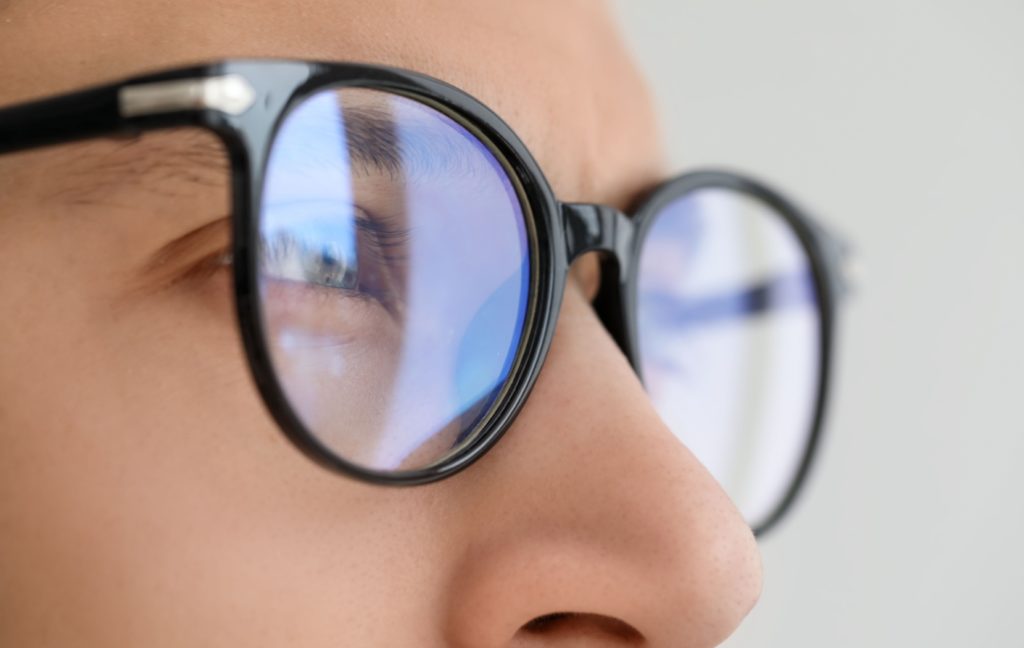Myopia, commonly referred to as nearsightedness, affects millions of people worldwide. For those with myopia, nearby objects appear clear, while distant objects are blurry or out of focus, making everyday activities like reading and driving a challenge.
While myopia can be easily corrected with glasses or contact lenses, there are also ways to slow its progression. To help prevent or slow down myopia progression try adopting eye-healthy habits like limiting screen time and spending time outside. There are also clinical treatments available like ortho-k lenses or low-dose atropine drops.
What Causes Myopia Progression?
Several factors contribute to myopia progression, which tends to begin in childhood and may persist into early adulthood. Understanding these factors can help you make proactive choices for eye health.
1. Genetics
Family history is one of the strongest indicators of myopia risk. If one parent is nearsighted, there’s a greater likelihood their child will develop myopia. If both parents have myopia, that risk increases significantly.
While we can’t change our genetics, being aware of this predisposition can help families prioritize regular eye exams and early detection to manage their children’s vision more effectively.
2. Age & Eye Development
Myopia usually begins during early childhood, when the eyes are developing and are more vulnerable to changes in shape. If the eyeball grows too long or the cornea becomes too curved, light focuses in front of the retina instead of directly on it, causing blurred distance vision.
The teenage years may show even faster progression due to rapid physical growth and hormonal changes during this period. While many people experience stabilization in adulthood, this is not always guaranteed, particularly in individuals with high myopia.
3. Environmental Factors
Modern lifestyles include habits and environments that are significantly contributing to the rise in myopia rates. Two major factors at play are screen time and environmental factors.
Devices like smartphones, tablets, and computers have become integral to our daily lives. For growing children, prolonged screen use for homework, gaming, or entertainment can all promote myopia progression.
Research shows that spending less time outdoors is linked to a higher risk of developing or worsening myopia. Natural sunlight plays a role in regulating healthy eye growth, and outdoor activities help prevent excessive near-work strain by encouraging distance vision.
4. Lifestyle Habits
Daily visual habits can significantly impact how myopia progresses. For instance, poor practices like reading in dim lighting, holding books or screens too close to the eyes, or neglecting to take breaks during extended focus periods can increase the strain on your eyes over time.
Additionally, a lack of regular physical activity might also indirectly affect vision. Children with active lifestyles often spend more time outdoors, reducing screen exposure and fostering better eye health.
How to Prevent or Slow Down Myopia Progression
While some risk factors like genetics are beyond our control, there are several practical steps you can take to manage and protect vision health, especially during childhood and adolescence.
Healthy Vision Habits to Adopt:
- Follow the 20-20-20 rule: Prevent eye strain from excessive screen usage by following this simple rule. Every 20 minutes, take a 20-second break to focus on something at least 20 feet away.
- Increase outdoor play: Encourage at least 1–2 hours of outdoor activities each day. Whether it’s riding bicycles, playing sports, or simply walking the dog, time spent outside is beneficial for your child’s eyes.
- Create an eye-friendly space: Proper lighting during reading and homework, positioning screens or books at an ideal distance of 14 to 16 inches from the eyes, and reducing glare in workspaces can help ease strain on your eyes.
- Limit recreational screen time: Help your children take regular breaks from gadgets and balance study time with healthier activities. Try implementing a no-screen hour for the whole family to reduce strain and improve overall wellness.
- Encourage active lifestyles: Physical activity promotes better blood flow and releases stress while indirectly supporting healthier visual habits.
Myopia Management & Treatment Options

If you or your child has been diagnosed with myopia, effective treatment options are available to help manage and slow the progression.
Common Myopia Control Options
- Prescription glasses or contact lenses: Corrective lenses are a standard solution to address blurry distance vision. While they won’t stop myopia from progressing, they effectively improve day-to-day functionality.
- Orthokeratology (ortho-k): These lenses are worn overnight to reshape the cornea temporarily. This non-invasive solution offers clear vision during the day without needing glasses and may slow eye growth in children.
- Multifocal contact lenses: Designed to correct vision at various distances, these lenses also help slow further elongation of the eye.
- Low-dose atropine eye drops: These drops, prescribed by optometrists, have been shown to slow myopia progression in children under close monitoring.
Prioritize Your Vision Health Today
Myopia is a growing concern across the globe, especially with today’s screen-heavy lifestyles. However, through healthy habits, regular outdoor activities, and professional guidance, you can take meaningful steps to protect your or your child’s visual future.If you’ve noticed signs of myopia in your child or want to discuss treatment options for slowing progression, our experienced team is here to help. Schedule an appointment at Calgary Optometry Centre today and give your family the gift of long-lasting, healthy vision.




